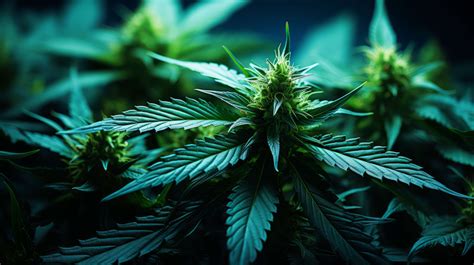
The Golden Harvest's Dark Shadow
October arrives like a thief in the night for the cannabis world, cloaked in amber leaves and the earthy promise of abundance. Dubbed "Croptober," this harvest month transforms sprawling outdoor farms into buzzing hives of activity, where growers in states like Oregon and Michigan reap the fruits of a summer's labor under the relentless sun. But beneath the celebratory haze lies a crisis brewing: an avalanche of product that overwhelms markets, crashes prices, and invites shadowy interlopers. Enter the "product inversion" plague—a deceptive influx of unregulated cannabis masquerading as homegrown treasure. As the U.S. legal cannabis market swells to a projected $45 billion in 2025, up from $33.6 billion in 2023, regulators stand at a crossroads. Can they prune the excess before it chokes the industry? This isn't just about surplus buds; it's a tale of fractured trust, economic sabotage, and a green rush gone rogue.
Imagine fields bursting with 4.54 million wet pounds of marijuana in Oregon alone last October—a record that sounds triumphant until you tally the toll. What was once a boutique bloom has ballooned into industrial excess, leaving small farmers with unsold stockpiles while black-market ghosts slip through the cracks. Product inversion, the sly art of funneling cheap, out-of-state weed into legal channels, exacerbates this chaos. It's not mere oversupply; it's organized deception, where California's bargain-bin flower—plunging 11% in sales year-over-year by early 2025—hitches a ride to New York's premium shelves, labeled as Empire State pride. The result? A market teetering on fraud, where equity programs for minority growers wither amid the flood.
Unmasking Product Inversion: The Sneaky Saboteur
Picture this: A Michigan mega-farm, licensed for 3.2 million plants by mid-2025—more than one-and-a-half per resident—churns out flower that once fetched $500 an ounce but now scrapes by at $60. Desperate to offload, operators exploit lax rules, stacking cultivation licenses like a house of cards. This surplus doesn't vanish; it inverts. Trucks cross state lines under cover of night, delivering illicit loads to New York processors who "log" them as local yields through padded harvest reports or phantom disposals. One anonymous cultivator spilled the beans: Out-of-state buds get swapped for in-state scraps, or extraction yields magically multiply beyond physics' bounds.
This isn't isolated mischief. In Missouri, a 2023 scandal unraveled when inverted medical marijuana tainted the supply chain, sparking recalls and lawsuits. New York, the nation's hottest new market with $1 billion in sales by 2025, quarantined $10 million in suspect products last spring, followed by a June recall. Yet, without a fully operational seed-to-sale tracker like Metrc until December, inversion thrives. It's a profit pirate: Oversupplied states export pain, undercutting locals by 30-50% on price, while consumers gamble on unverified safety. Regulators' delayed inspections and slap-on-the-wrist fines—mere thousands against multimillion hauls—make compliance the fool's errand. As one expert quipped, "Fraud is easier than farming legally." The crisis peaks in Croptober, when fresh harvests mask the influx, turning golden opportunity into gilded grift.
Flooded Fields: The Alarming Numbers Behind the Surge
The stats paint a harvest horror show. Nationwide, wholesale prices have nosedived 32% since 2021, with 21% volatility swings in 2025 alone as supply outpaces demand. California's top 10% of cultivators now lord over 60% of acreage, a consolidation frenzy post-2023 license expansions that funneled small-timers into oblivion. Michigan mirrors the madness: Four straight years of sales dips by June 2025, despite planting enough for every adult to hotbox a forest.
Zoom to Croptober's epicenter. Oregon's 2024 outdoor haul shattered records at 4.54 million pounds, flooding a state already awash in 38,600 licensed businesses nationwide—a 1% quarterly dip masking deeper woes. New York's ramp-up from 275 to over 625 licenses in 2025 aims to spark growth, but without guardrails, it's gasoline on the fire. Equity licensees, meant to empower communities of color, watch helplessly as inverted imports—often from Washington's saturated fields—capture 20-30% of shelf space, per industry whispers. Consumer demand? Stagnant at best; inflation bites, and one in three women over 21 partake, yet the market's $91 billion projection by 2033 hinges on trust, not tricks.
These figures aren't abstract—they're the ledger of loss. Small growers discard compliant crops while inversion swells illicit streams, eroding the $45 billion pie into crumbs for the craft crowd. Safety suffers too: Unknown provenance invites contaminants, from pesticides to molds, in a sector where recalls cost millions. As prices crater, debt-laden operators fold, with Q2 2025 revenues flat at $280 million for giants like GTI. Croptober's bounty? A bitter harvest of imbalance.
Regulatory Revolution: Blueprints for Balance
Regulators, it's time to wield the shears. First, fortify the digital moat: Metrc-style tracking is table stakes, but pair it with real-time yield audits and AI-flagged anomalies to sniff out inflated logs. Surprise inspections—unannounced raids on scales and manifests—could quarantine fakes before they bloom. New York’s Office of Cannabis Management must evolve from paper tigers to profit predators, swapping fines for asset seizures that claw back inverted gains.
Structural surgery follows. Impose canopy caps: Limit grow space per license to match demand forecasts, as Oregon did in 2019 by halting new production permits amid glut. Ban license stacking—no more mega-farms masquerading as mom-and-pops—and enforce ownership caps to scatter power, preserving niches for equity players. Pennsylvania and Virginia, eyeing 2026 launches, should bake these in from day one, avoiding California's consolidation curse.
Empower the endgame: Consumers. Mandate transparent labels—QR codes linking to verified farm coords and audit trails—so "New York Grown" isn't greenwashing. Distributor audits would cascade accountability, while interstate pacts could tariff inverted flows, nudging oversupplied states like Michigan to prune their own vines. A $30 million grant pool for compliance tech, as floated in New York's 2025 budget, could seed this shift. The math? Robust enforcement could reclaim 15-20% of inverted market share, stabilizing prices and salvaging $5-7 billion in annual legal value. Regulators aren't just referees; they're architects of equilibrium.
Lessons from the Frontlines: States That Fought Back
Wisdom whispers from the weeds. Oregon's 2019 license freeze slashed new grows by 40%, easing prices from freefall and buying time for demand to catch up—sales rebounded 8% by 2022. Colorado, post-2014 boom, introduced potency taxes and export allowances, offloading 500,000 pounds surplus to medical markets abroad, netting $50 million in relief.
Michigan's half-measures falter: Despite plant caps, stacking loopholes persist, but a 2024 audit blitz nabbed $2 million in inverted hauls, a blueprint for scaling. New York's spring quarantine? A skirmish won, but victory demands vigilance. Cross-state compacts, like the Multi-State Cannabis Council prototype, could harmonize rules, curbing the "race to the bottom" where lax locales poison neighbors. These tales teach: Swift caps save seasons, audits unearth truths, and collaboration conquers cascades.
Cultivating a Fair Future: Beyond Croptober
Dawn breaks on a reformed horizon. By Christmas 2025, with Metrc humming and audits prowling, New York's Croptober could flip from fiasco to fiesta—local buds shining sans shadows. Imagine equity growers thriving, their $30 million grants fueling innovation: Hemp-cannabis hybrids or zero-waste extracts that delight without deceit. The $63.75 billion global market by 2025 beckons, but only if regulators reject complacency for courage.
This isn't prohibition's echo; it's legalization's litmus. Confront inversion, cap the chaos, and label with light—or watch craft crumble into corporate concrete. As Damian Fagon, ex-regulator turned reformer, warns: Choose oversight, or court monopoly's maw. In the end, ending Croptober's crisis isn't about less green; it's about greener futures—for farmers, families, and the fields that feed our freedoms. Harvest wisely; the crop awaits.
D Squared WorldWide delivers premium, compliant cannabis products, crafted to thrive in today’s market. Amid Croptober’s chaos and product inversion, our rigorously audited, farm-fresh flower ensures unmatched quality and transparency. Sourced from trusted growers, our offerings dodge the oversupply glut, maintaining stable value in a $45 billion industry. With real-time tracking and verified origins, we protect your shelves from illicit imports. Elevate your inventory with D Squared’s commitment to purity and profit. Don’t let market volatility dim your shine—schedule a call today at dsquaredworldwide.com to secure your supply and grow with confidence!
Reference:
1. BDSA. (2023). U.S. cannabis market forecast: 2023–2027. Retrieved from https://bdsa.com/market-forecasts/
2. Cannabis Business Times. (2024, November). Croptober 2024: Oregon’s record harvest and market impacts. Retrieved from https://www.cannabisbusinesstimes.com/article/croptober-2024-oregon-harvest-market-impact/
Fagon, D. (2025, February). Reforming cannabis regulation: Lessons from New York’s equity program. Marijuana Moment. Retrieved from https://www.marijuanamoment.com/reforming-cannabis-regulation-lessons-from-new-york/



